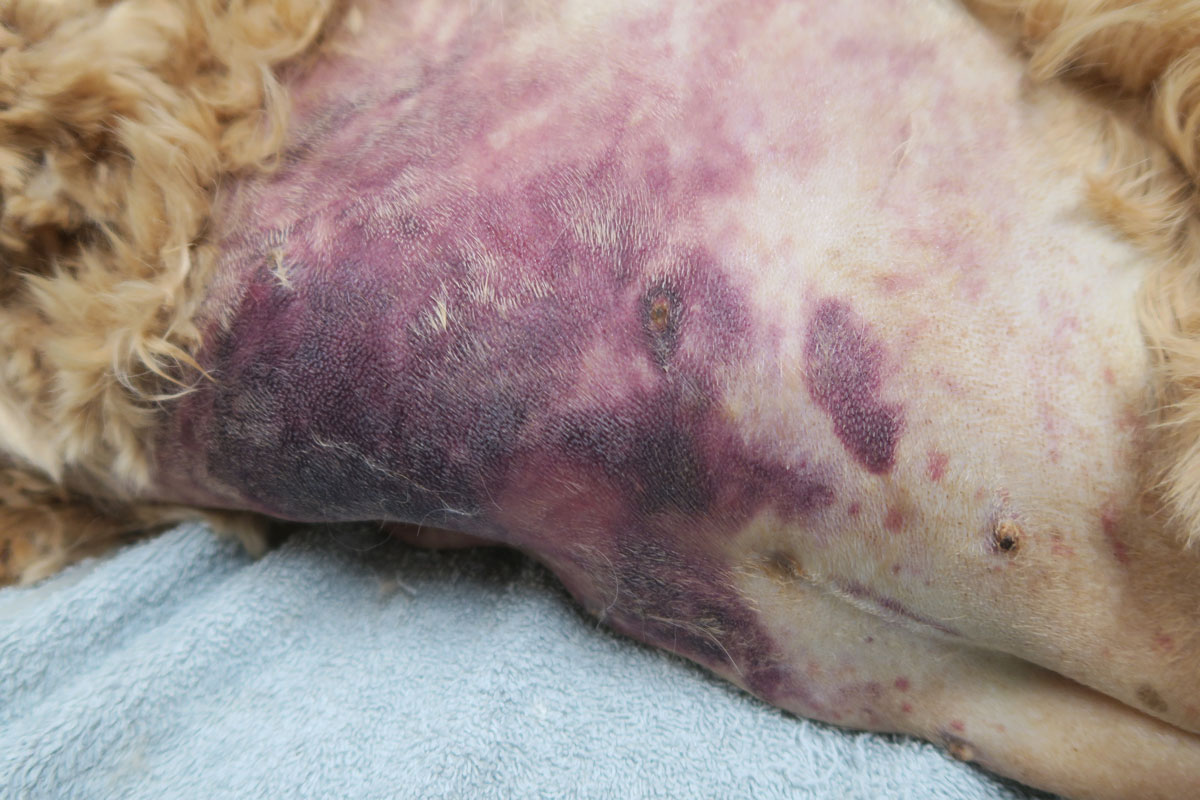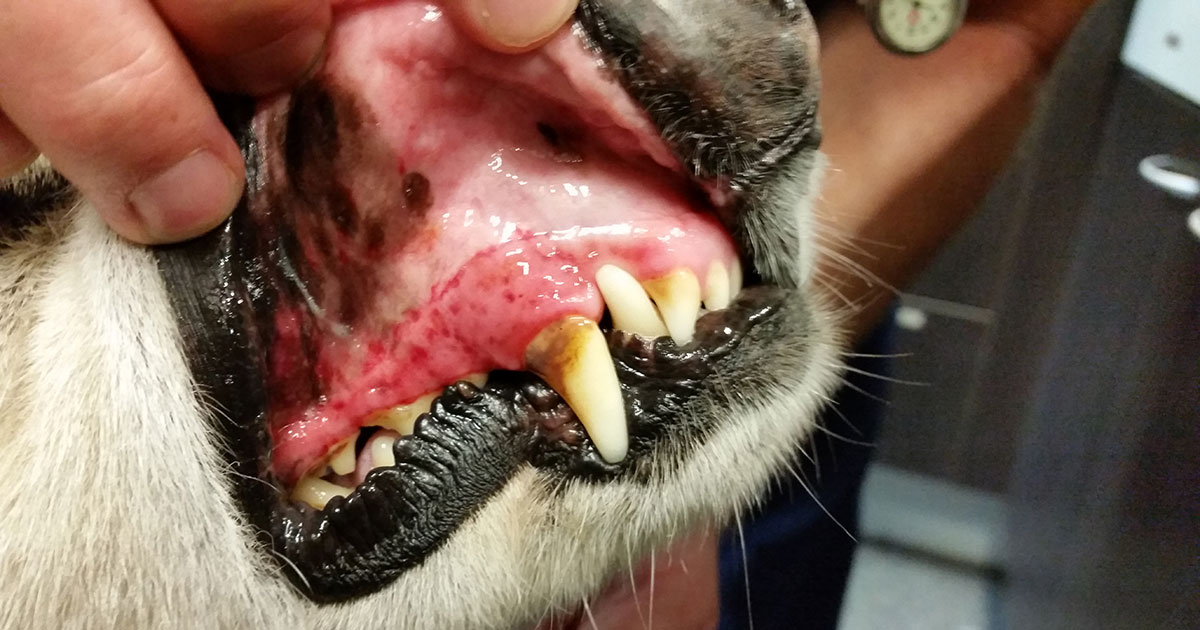Following on from part one, where we discussed that just by getting a good history and assessing the signalment a list of differentials can be narrowed down, we now look at how we can continue to narrow down the list based on the physical examination findings.
Although we now understand the way coagulation occurs in the body is different from the primary and secondary haemostasis model, it is useful to use this model when it comes to diagnosing the underlying cause.
Primary coagulopathy deficiencies – involve the platelets
- ONSET: Usually more insidious, not usually enough to present with life-threatening blood loss (unless gastrointestinal).
- CAUSES: Petechiae, ecchymosis, bleeding from mucosal surface.
- LEADS TO: Epistaxis, gingival bleeding, haematuria, melaena.
- EXAMPLE: Older dog with continuous bleeding from a lump above eye.
Pro Tip
Think the three Ps: primary, platelets, petechiae

Secondary coagulopathy deficiencies – involve the clotting factors
- ONSET: Usually more acute and present with life-threatening blood loss.
- CAUSES: Bleeding into SC tissue, body cavities, muscles, joints.
- LEADS TO: Haematoma, haemothorax, haemoabdomen, pulmonary haemorrhage.
- EXAMPLE: Young dog coughing up blood, more likely secondary coagulopathy.
Pro Tip
Clinical signs overlap, so always rely on diagnostics to confirm your presumptive diagnosis.

In part three, we cover what diagnostic tests you need to perform to confirm your suspicions…

Leave a Reply